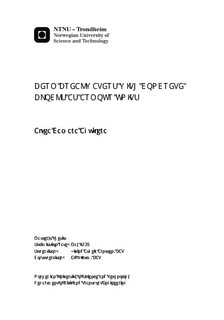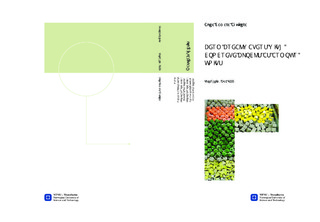| dc.description.abstract | The objective of this thesis is to test the hydraulic stability of berm breakwaters with concrete armour units. To achieve this, five breakwater models were tested with the same wave program. All the models were modifications of the Sirevåg berm breakwater. The modifications consisted in the replacement of the class I stone form the armour layer by two different concrete units, cubes and cubipodsThe design waves were Hs,100=7.0 m, Tz=10.6 s. HoTo=48. The wave program consisted in 7 different wave steps contained a total of 16.000 waves approximately. The tests were carried out with irregular waves. The test runs are based on replicas of the two major storms recorded close to the Sirevåg harbour, and had been used before for other berm breakwater studies at NTNU.The results from the different model tests were compared with each other and with a previous investigation with berm breakwater built with rocks. The results were also compared with Tørum recession equation to know the usefulness of the equation with concrete blocks. Finally, it was concluded that, based on the data obtained during the tests, concrete cubes have a very good behaviour in berm breakwater structures. The tests shown that models built with concrete cubes in the armour layer experience the same recession than the same model built with rock when they were exposed to low waves. In addition, they experienced lower recession than the models with rock when they were exposed to high waves. It was also observed that the continuity of the armour layer until a deeper level reduced the recession when the front slope was continuous. In addition, the results reflected that the layer porosity is a critical factor in layers made of concrete units. Because, a small change on it led to a completely different behaviour.In this investigation, the models with concrete cubipods underwent more recession than the models with cubes under the same Ho, HoTo and Ho√To circumstances. This result contradicts other tests made with cubipods that proved that cubipods have more hydraulic stability than cubes. A cause could be the lower density of the cubipod units, as some experiments had proved that light concrete elements have less hydraulic stability than according to the stability number.Further investigations could analyse the behaviour of berm breakwater with concrete cubipods with concrete densities closer to the values used in prototype construction (around 2.4 t/m3).During the tests, it was observed that the deeper rows of concrete blocks were the most unstable. Giving more stability to these rows will significantly increase the stability of the whole structure, making it tougher and probably reducing dramatically the recession. A way to improve the structure?s behaviour would be to build a toe berm were the concrete units? layer starts. This could be investigated in further thesis.Moreover, profiles in which the concrete units are lying over rock with lower Dn50 could also be tested. This way the rocks will fit better between the units, increasing the friction of the armour layer with the underlying rock layer and therefore increasing the stability. Other issues that could be investigated are the influence of the storm length, the ice action and the economic viability. | nb_NO |

